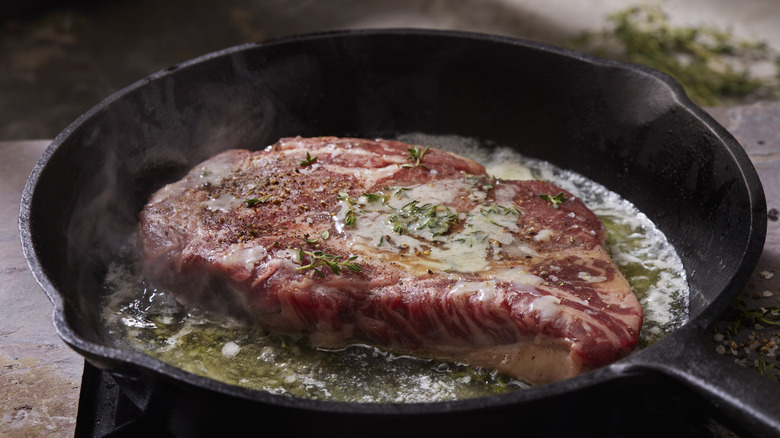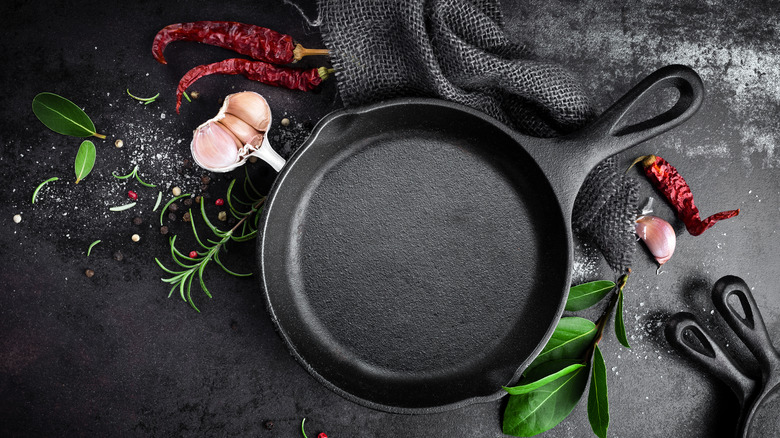The Key Reason You Should Be Using Your Cast Iron Skillet More Often
We may receive a commission on purchases made from links.
There's a lot of noise surrounding cast iron pans, from how to properly season the surface to the best cleaning and drying techniques. Yet regardless of how you use your beloved cast iron skillet — and whether you purchase a budget-friendly skillet or a pricier one — it's a good idea to use it frequently. That's because the more often you break out your pan, the better flavor that cast iron surface will impart.
After all, one of the signature allures of cast iron is that it develops layers of seasoning over time. That's why cleaning a cast iron pan is so controversial; you don't want to wipe away all that hard-earned seasoning and ruin the pan's integrity. Given cast iron's retention of flavor, your every recipe will therefore add to its seasoning. Whether you're making a tomatillo shakshuka or a skillet-baked pasta, your pan will remember its previous dishes — and that's a good thing.
Routine cast iron skillet usage, however, isn't just about enhancing the pan's seasoning but also about improving the material's other signature draw. Namely, the more often you use your cast iron pan, the better off its surface will be, preventing food from sticking.
Use your cast iron pan routinely to maintain its seasoning and additional nonstick effects
When used often, cast iron pans — like Le Creuset's skillet – develop enough seasoning to prevent food from sticking to the surface. On their own, cast iron skillets are not entirely nonstick, but you can help your pans develop a less sticky surface. Every meal you make adds a desirable layer of seasoning that make the pan less sticky with each and every use. This not only makes cooking easier, but also keeps your pan in the best possible shape, resulting in greater longevity and less rust.
Of course, you'll want to help your cast iron pan out by using oil or another base that prevents food from adhering to the surface. And, once you're done cooking, don't forget to clean your cast iron while the pan is still hot. That way, the food will come right off — and your skillet will be ready for its next recipe.

